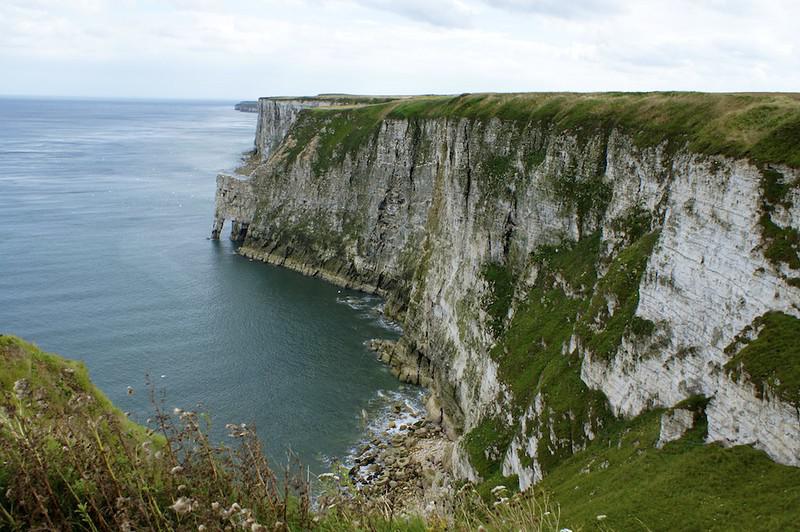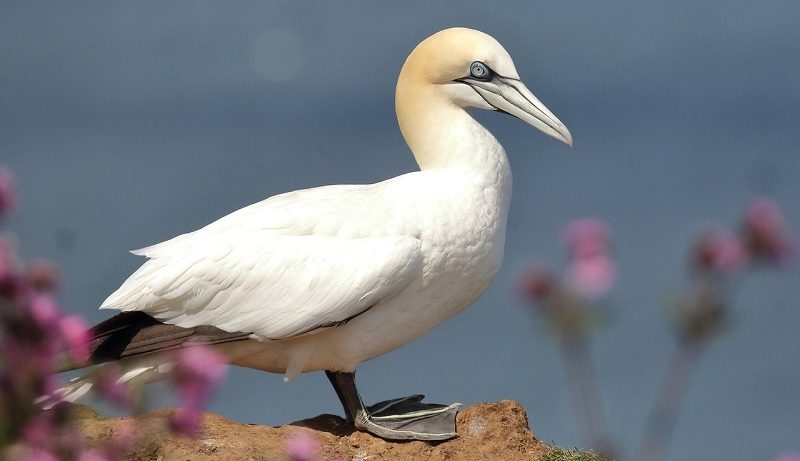Seabird City
On the east coast of Yorkshire, near the small village of Bempton, the land meets the sea in dramatic fashion, rising above a hundred metres high and falling away to the ocean. The cliffs here are some of the highest in the whole of England, and are formed of very hard chalk that resists erosion and stands firm against the elements. For visitors to this part of Yorkshire, this provides a fantastic opportunity to get some great coastal views, though you’ll benefit from having a head for heights. There is a good walkway that winds along the top of the cliffs, which themselves stretch for about 10km from Flamborough Head to the town of Filey.

Along with the scenery, the Bempton Cliffs are also home to one of the most spectacular wildlife spectacles in the country. The cliffs are rife with ledges and crevices that are perfect for nesting seabirds, with almost half a million visiting the area to nest every year. The sight and sound (also the smell) of this enormous seabird colony can truly be a unique experience for wildlife watchers. The cliffs are run by the RSPB as a nature reserve and there is a visitor centre to make sure you get the most out of your visit.
A Need for Speed
Among the rich diversity of birdlife that can be found on the Bempton Cliffs, it might come as a surprise that one of the stand-out species is one which is not actually a seabird at all. Well known for its record-breaking speed, the Peregrine Falcon is a common sight around the UK’s sea cliffs, due to its preference for nesting on high, protected ledges. Peregrines are one of the most incredible aerial predators, able to reach speeds of 242 mph during dives known as stoops. This makes it the fastest creature in the animal kingdom and a dangerous adversary for the birds that make up the majority of its prey.

Normally hunting at dawn and dusk, Peregrine Falcons use surprise as their primary tactic. When they spot a potential target, they drop into a steep dive, folding their wings back and tucking in their feet. The prey is usually struck in mid-air, with the Peregrine using a clenched foot to effectively punch the bird. The force of the impact is normally so great that the victim is immediately knocked out, and the Peregrine will often circle back around to capture the prey as it drops. Pigeons are the most common bird that is taken, however Peregrines will also feed on other medium-sized birds such as ducks, wading birds and crows. Top tip for spotting Peregrine Falcons at Bempton Cliffs: listen out for their piercing screeches that give away their presence.
Marine Favourites
There are so many species to see at Bempton Cliffs, with many of the UK’s popular coastal species being found in the area. During summer, the seabird breeding season will be in full swing and the cliffs will be alive with nesting birds. Guillemots and Razorbills are two of the most common sights, but be on the look-out for pairs of Gannets. This species usually prefers to nest on remote offshore islands, however Bempton Cliffs is the only part of Britain where Gannets can be seen nesting on the mainland. One of the most popular seabirds – the Atlantic Puffin – also calls the area home and often entertains visitors with its comical behaviour.
The seabird colony is the highlight of Bempton Cliffs for many, but birdwatchers will be happy to know that many other species can be seen in the area. Barn Owls and Short-Eared Owls can be spotted in the evenings during summer, with Skylarks, Linnets and Reed Buntings also being common. With the cliffs offering such a great vantage point over the ocean, be sure to keep an eye out for marine mammals, especially on calm days when the waters are still. Porpoises and seals will sometimes come close to shore to feed, and dolphins might be spotted further out. The Bempton Cliffs are therefore one of the best wildlife watching destinations in the UK, with their resident seabird colony being one of the very best.
Photo Gannet Bempton Cliffs: Elise Aldram on Pixabay

